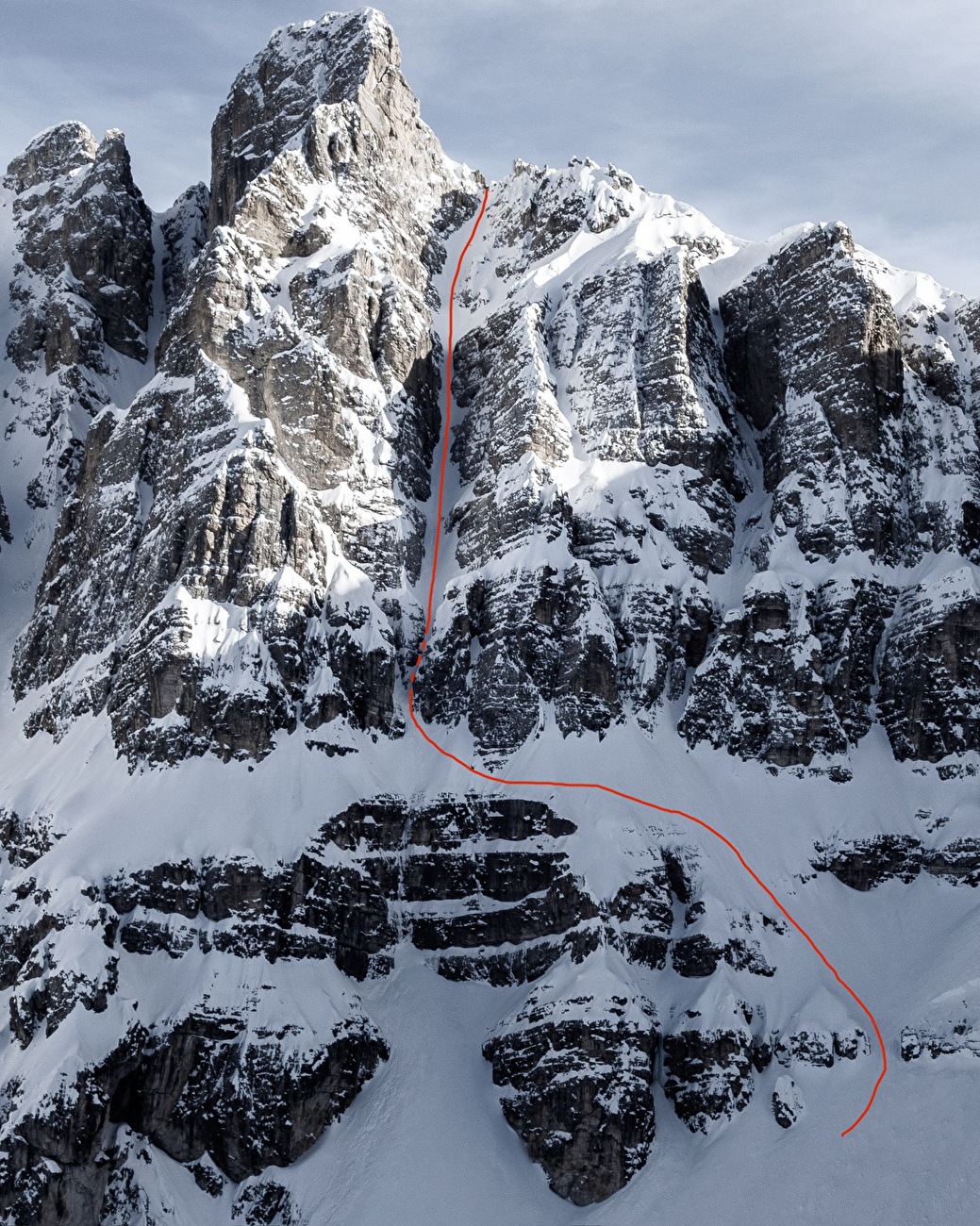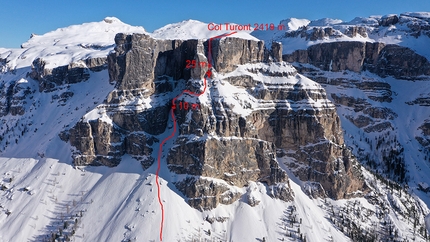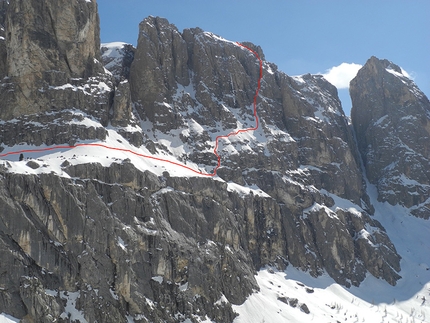Probable first ski descent on Piz de Puez, Dolomites

 1 / 10
1 / 10 archivio Franz Anstein
archivio Franz Anstein
On 25 March Federico Maremonti, Andreas Tonelli and I skied an interesting line I had been thinking about all season. We startet walking from the Vallunga parking lot in Val Gardena and reached the saddle between Piz Duleda and Piz Puez mainly by following the summer trail. From there we followed the ridge towards the west summit of Piz Puez until we reached the couloir entrance.
The first ten meters are tight, rocky and steep so downclimbing or rappelling is neccessary (we put a rope around one of the many rocks to help us get in). As soon as there was enough space we put on our skis and started our descent, initially steep but soon the angle eased off, overall probably around 40-45°, with some sections of 50°. Towards the end of the long straight section the couloir turns to the right and a 30-40m rappel is neccessary (blue cord on the skiers left).
Following the rappel some airy turns lead to a very exposed, steep and slighty uphill traverse leftwards. The beginning of this traverse is intense, in one spot the 100m cliff is only 3-5m below you and the steepness of the slope is 50°. After these first 50 meters the exposure and steepness ease off significantly, while 100 meters further a passage between the rocks leads to the beautiful slopes below. From the valley floor we toured back up the Forcella della Roa and skied down to Santa Cristina, finishing the day with a few well-deserved beers.
The total height gain of the ski tour was around 1800 vertical meters, starting from Longiarù would prabably have resulted in a shorter day. Since we didn‘t see any signs of previous descents and after asked most of the local experts, we are quite sure that this was a first descent, most likely thanks to the fact that the line is very hidden and does not look skiable from below. We reckon the difficulties checks in at around 5.1, above all though we suggest E4 for the exposed traverse. In any case, we would be happy if someone repeated it and corrected us :-) Thanks Fede and Andreas for the beautiful day.
by Franz Anstein



 Copia link
Copia link









 See all photos
See all photos



























